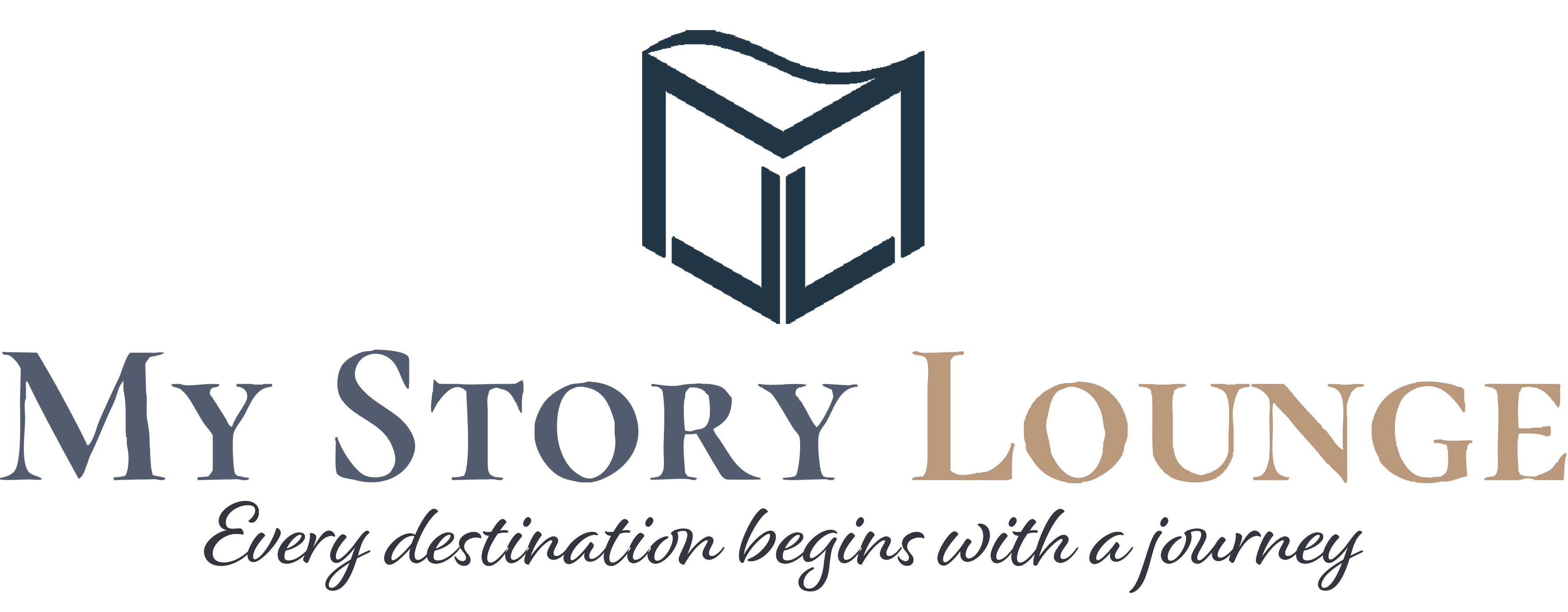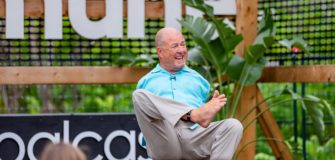Making It Through Anything – Robyn Benincasa
Share
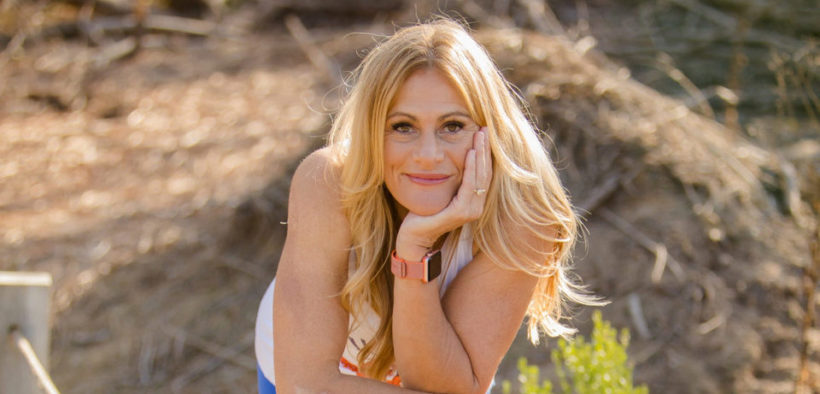
“It’s not about trying to get back to what you were, it’s about trying to be the best of what you’re capable of today, this minute.”
Obstacles and challenges are nothing new to Robyn Benincasa. After all, as a professional adventure racer and endurance athlete, she has competed in some of the harshest environments on planet earth. For the last 20 years, she and her teammates have been competing at the front of the pack in the most unique and compelling classrooms on earth: the jungles of Borneo, the Himalayan peaks of Tibet, the rivers of Fiji, the rainforests of Ecuador and the deserts of Namibia, among other extreme environments.
As a two-time World Champion adventure racer, San Diego firefighter, and CNN Hero, Robyn firmly believes in bringing together ordinary people to accomplish extraordinary things.
She is also a motivational speaker and trainer who has worked with countless leaders and teams at Fortune 500 companies to cultivate resilience and cohesive teamwork, including organisations like IBM, Starbucks, Walmart, Boeing, Johnson & Johnson, HubSpot, Intel, and more.
Furthermore, Robyn is the founder of The Project Athena Foundation, a nonprofit organization that helps women who have experienced medical challenges to fulfill their athletic ambitions. To top it all off, she holds three Guinness World Records:
Her first was in 2010, for the farthest distance travelled by a woman by canoe or kayak on flat water.
In 2011, Benincasa set a Guinness World Record for the farthest distance travelled by a woman by canoe or kayak in 24 hours on moving water.
She secured her third Guinness Record in 2014, for the greatest distance travelled by a woman on a stand-up paddleboard on still water in 24 hours.
Robyn amplifies the epitome of what teamwork can accomplish and what it means to get back up when life kicks you down. She sends a message that we are all capable of a great deal of things if we put our minds to it, especially when working with others, despite the challenges and obstacles that stand in our way.
EARLY LIFE
Tell us more about your family background and share with us on what it was like growing up.
I had a pretty normal childhood in Long Island New York with a sister and parents who were pretty “indoorsy”.
Up until about the age of 8, I just went to school, got good grades, and tried not to bother my mom too much. Dad would see us on the weekends.
How did your upbringing shape the person you are today?
It wasn’t really my upbringing that shaped my life, it was a flyer that magically landed on my front lawn from a local gymnastics club when I was 8. I asked my mom if my friend and I could go to a class, and from my first practice on, I knew I wanted to get as far as I could in that sport.
When I was 12 we moved to Arizona. I joined Desert Devils Gymnastics and the coach of that program, Stormy Eaton, became one of the most important figures in my life. We all loved him so much. He was a father figure whom we always looked up to and we wanted to make him proud through our achievements, but he was also fun and silly like us. When he was training for the Ironman Triathlon, he would take the team out on long bike rides and hikes in the Grand Canyon. It was then I discovered what I lacked in speed in the gym, I made up for in endurance in outdoor sports.
At our summer gymnastics camp one year, he challenged us to run 13 miles at one go. Ultimately, I was one of only 3 gymnasts from my team that finished the camp. It was a thrilling feeling of accomplishment and it made my coach so proud.
So, when I graduated college (where I switched from gymnastics to springboard diving), I knew that the next sport I wanted to tackle would be Ironman in honor of, and inspired by, Stormy. It was then that my endurance racing career was born.
How would you sum up your childhood?
Gymnastics practice, school, diving practice, homework, track practice, cross country practice, eating lunch in the library so I could get a head start on my homework. No parties, not a ton of friends outside of sports.
All was good. I haven’t changed much.
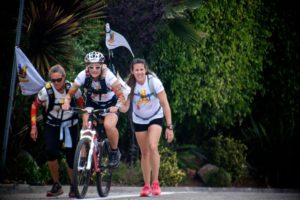
JOURNEY
How and why did you become a firefighter, and subsequently, how did you get into endurance racing?
When I graduated from college with a Bachelor of Science in Marketing, I worked as a hospital supply and pharmaceutical sales representative for about 7 years. Even so, I was still equally drawn to my athletic life.
So, in 1996 I ditched the pantyhose and heels and picked up an application for the San Diego Fire Department. I passed all the tests, but there was an unfortunate 3-year hiring freeze. I had some fun as a substitute teacher and semi-professional athlete (the nice way to say “lived with roommates or on friend’s couches”) until I got my shot at the fire academy. Being a firefighter allows me to be all of the things I love the most: an athlete, a rescuer, an emergency medical first responder, a teammate, and an adventurer. It’s never the same day twice!
On the endurance racing side, by 1996 I had completed 10 Ironman triathlons, with two podium finishes in my age group at the world championships in Kona, Hawaii. But I was still a little too slow at the swim and run sections to race in the pro category. After my last Ironman in Kona, I was in the hospital on IV antibiotics for several days. Several racers picked up a crazy E. coli infection from the water at the start line.
I realized that I was ‘okay’ at triathlons, but the sport I was going to be really good at in my life had to be even longer. I was never fast, but I could maintain one speed forever over a long distance. I also vowed to find a sport that had weight divisions since I wasn’t what one would call “frail” (I started training in judo the minute I got home from Kona).
My triathlon competitors were up to 40 pounds lighter in body weight than I was, which was a major disadvantage, to say the least. So having assessed my unique strengths and talents as a strong, slowish, not small girl with a ton of grit, I went in search of what was next, and pretty quickly, the universe brought me to adventure racing.
Be careful what you wish for! The moment I read about the first American team ever to enter this crazy multi-day, multi-sport, nonstop race called the Raid Gauloises, I thought “This is the craziest, most awesome, most ridiculous sport in the entire world…and it’s PERFECT!”
Along the way, what were some hard decisions you faced and challenges you had to overcome?
The challenges in an adventure race are endless! For 5 to 10 days and nights NON-STOP, you’re navigating with a map and compass through the most remote terrain on earth, using only non-motorized transportation (mountain biking, mountaineering, kayaking, running and whitewater rafting) to get across the finish line with all 5 of your teammates, operating as one big team at every step of the way. If one of your teammates quits, the entire team is disqualified. And there was no official built-in rest time. The clock literally never stops, so the winning teams will only sleep 1.5 to 2 hours every 24 hours.
One of my craziest memories is from the Raid Gauloises World Championship in Ecuador. We had to summit a 19,700-foot active volcano on the third day of the race, right after running 75 miles at 14,000-foot elevation! My oxygen saturation was only 71% at the medical checkpoint before our big summit attempt. I remember crying and coughing green things out of my lungs (we all were) and having a temperature of 104 degrees.
The doctors at the checkpoint didn’t think I should continue, and in fact weren’t allowing anyone to continue if they had an oxygen saturation of 70% or less. But I knew that I had to go. I would have never forgiven myself if I let the team down. My teammates attached me to the rope in the middle of the group and (very literally) dragged me up the mountain through the darkness. I have no recollection of any of it.
The only thing I remembered was crying non-stop because somehow it helped me breathe. At 18,000 feet, the doctors did actually send 2 of my teammates back down the mountain to the checkpoint/hut at 15,000 feet because they were showing signs of high-altitude pulmonary edema and it was too dangerous to continue up. But they assured us that they were going to change the rules for all of the teams behind us as well, and that as long as each team got 3 people to the summit we could continue in the race.
To this day, I can’t believe I was one of the three of us that made it to the summit at 19,700 feet. But it was my teammates that literally and figuratively gave me the confidence and desire to continue into the clouds, knowing I may not be able to make it back down or if my blood could stay oxygenated enough to sustain life. I still have no idea what my oxygen saturation was at nearly 20,000 feet if it was 71% at 15,000 feet.
But I did discover the power and magic of the TEAM. None of us could have finished that race alone, NO WAY. We literally raced with one heart and one mind. All problems were ours. All success or failure was ours. All egos were left at the start line. And not only did our team survive, we went on to win that race 6 days later! To this day, that race in Ecuador is still regarded as the longest and toughest adventure race in the history of the sport.
During our darkest moments, though, when our own strength and courage ran thin, we all succeeded by borrowing courage from each other. Because someone else on the team was brave enough in that moment for the others who weren’t, they were able to keep us all afloat. I can’t tell you how many times I was wet, cold, exhausted, crying or hallucinating from lack of sleep on our fourth day of racing with only 6 hours of sleep TOTAL under our belts, wondering if I was going to have the courage or strength to keep going. And then someone on my team would always reach out and grab my hand, offer me a tow line, make me laugh, feed me some Fritos, or even sing the Sound of Music soundtrack with me to get me through the toughest, scariest obstacles and darkest, coldest nights. Never in a million years would I have finished an adventure race alone.
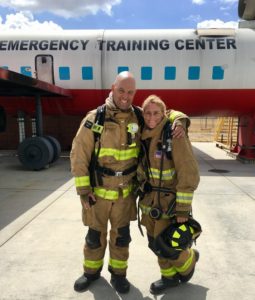
Another technique that also worked well for me during my toughest moments, was to let myself think through the process of quitting. I asked myself how would I feel in a week from now when I’m warm and fed and sitting on my couch thinking about letting myself and my teammates down?
The fear of having that feeling, labelling myself as a quitter and being the person that ended the race for the entire team, weighed heavily on me. I didn’t want to live with that label for the rest of my life. That fear was so overpowering and sad that I would suddenly get a burst of energy knowing that I could still change that reality! Right now! If I just get up and keep going.
The end of that story was STILL under my control at that time, no matter how horrible I felt at that moment. We can never have a new beginning, but in every individual moment we get to write the next chapter and decide how our story ends.
Share with us some experiences that you think are significant to your journey so far.
In 2007 I discovered I had end-stage osteoarthritis in both of my hips. I ran out of my last bit of cartilage at the world championships in Scotland and fell to the ground. When I stood up, I discovered my leg would no longer move forward on its own. Like it wasn’t getting the signals from my brain somehow. I didn’t want to quit though, so we figured out a way for me to pull my leg forward with a rope around my quadriceps. After some practice, I got pretty good at the timing of being my own puppet.
The team had to take my pack and all of my weight. We were disappointed that we weren’t going to win, but we still finished in the top 10. My husband had to carry me around on his back until we got home, and the doctor confirmed that I had zero cartilage left in one hip and very little in the other. I was devastated. I was not only facing one hip replacement, but two.
After my first hip replacement, with another not too far behind it, I knew I wasn’t going to be a good enough adventure racer anymore, so I made a couple of conscious and proactive decisions pretty quickly. It was simple: I wanted to focus on what I COULD do instead of what I couldn’t do. Why torture myself? There’s lots of cool things to do in the world!
I also wanted to take all the skills I had developed, and a few of my semi-broken, adventure racing pals to create a way to help other people create their big comeback after a setback in their own lives. So, the Project Athena Foundation, along with an ultra-endurance solo kayaking career, were born in 2008. It’s still going strong.
We not only take survivors on endurance adventures (such as hiking all the way across the Grand Canyon or kayaking and riding through all of the Florida Keys), but we also take fundraisers, who do the adventure right alongside the survivors, every step of the way. We all have a few setbacks we need to turn into comebacks, don’t we?
Sometimes a setback offers us a beautiful gift. I think when I made the conscious decision to put on my beanie cap of gratitude for what I still did have (versus mourning what I was losing) and the fact that in the lottery of life’s setbacks, having hip replacements was a winner – it changed everything.
In life some rain must fall. At least for me, this was the sun shower of rain storms. I decided to be ruled by the hope of success. It’s not about trying to get back to what you were, it’s about trying to be the best of what you’re capable of today, this minute.
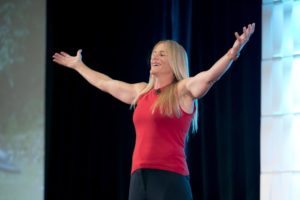
ACHIEVEMENTS
Which achievements/milestones are you most proud of and why?
I’m so happy that Project Athena has changed so many lives in the last decade. We put so much love into our beneficiaries so they can have the most amazing comeback story. And those comeback stories have a huge ripple effect in the world afterwards. It’s amazing to think about how many people our team has reached out to and made a positive impact in their lives.
I’m proud to be the mom of one adorable puppy girl named Valentine! She has inspired me to create an animal sanctuary in Sedona, so I can rescue hundreds more ‘Valentines’ and other creatures that just need a paw or leg up in this world after their own setbacks. A little like Project Athena, but for animal rescue.
I’m just thrilled with how life has turned out so far. I’ve been able to capitalize on my strengths, inspire others to create what’s next in their lives, and create a couple of small companies and a nonprofit foundation with my friends so we can all do WELL and do GOOD at the same time. That’s what I’ve always aspired to do!
What do you think are the key ingredients to your success?
At any one point of time, I always have a goal, mission or dream. Without them, I’d be lost.
Tenacious pursuit of greatness, whether that’s in my athletic life or business life. There’s always something I feel like I need to learn, know, or change. I know I can always be better, and I’m not happy unless I’m among the best of the best in whatever I choose to focus on.
Human Synergy. I always surround myself with people who have strengths and talents and skills I don’t have and find a way to make them my teammates.
I focus on the comeback, not the setback. I know that change is the only thing that’s going to stay the same in life. I try to focus on what I can learn in times of challenge and change and to focus on what I CAN do instead of what I can’t do.
What lies ahead in terms of your goals and ambitions?
Oops. I might have answered this one already!
To help survivors live their adventurous dreams through Project Athena and create new adventures each year.
Start an animal sanctuary in Sedona, Arizona (USA) in a couple of years! I want to save them all. I also want to train my rescue dogs in agility sports to keep their brains and hearts happy and healthy. If we can get good enough maybe that will be my next sport!
Do the Alabama 650-mile endurance paddling race.
Continue speaking about building world class teams that adapt, overcome and win as one team as long as companies, associations and user groups will invite me to come play!
I want to retire from the San Diego Fire Department and continue my short-term rental property business in Arizona.
Pretty soon, we’ll even have some modern cabins out on the animal sanctuary so people can come stay, volunteer, and play with the animals.
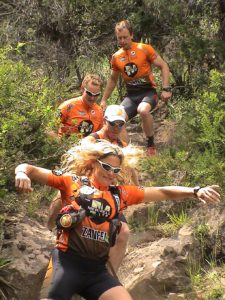
PERSONAL (LIFE)
What is your life motto (or core values) if any?
I have a bunch of core values or sayings I live by (all my original quotes):
- You don’t inspire your teammates by showing them how amazing YOU are, you inspire them by showing them how amazing THEY are.
- You can’t create a new beginning, but right now you can create a new ending.
- You are never defined by your setbacks; you are defined by your comebacks.
- Your goals are upstream. If you’re floating through life, you’ll never get there.
- Always have a goal, and a deadline to accomplish it, on your calendar. Would you ever have studied in school if there wasn’t a test?
- Leave your ego at the start line; it’s the heaviest thing in your pack.
- Surround yourself with people who have been where you want to go.
- Keep searching until you find the thing that wakes you up at night to dream.
To you, what are the most important things in life?
~ Goals and dreams.
~ Without the North Star and magnetic pull of goals and dreams, I think people are lost. For every one of my family members and friends, my wish is that they have that THING in their life that creates passion and greatness.
~ Whether that’s to be the CEO of a company or to be the best mom or dad on earth, the most important thing is having a mission that drives you.
~ Teammates. Notice I didn’t say family. Teammates aren’t always blood, but they’re 100% love. Surrounding yourself with like-minded people you admire and respect, who can help show you the way, and who genuinely want you to succeed are priceless.
~ Making good decisions.
~ Our ability to make good decisions is the only constant we have throughout our lives, and it completely dictates our success.
I always wish for everyone I love to have this capability above all others. I often envision life as being a mouse maze. Your cumulative decisions at each intersection point in your life dictates your hunk of ‘happiness cheese’.

What’s worth mentioning on your life’s bucket list that you have not done?
~ Starting my animal sanctuary in Sedona, which I first dreamt about 20 years ago
~ I also have a small, but wild, notion to try sprint kayak racing
~ To take back my Guinness 24-hour Flatwater Kayaking record
~ To be a mom to a capybara
~ Start another successful business in short-term rentals when I retire from the fire department
~ And to continue to grow my speaking business with 2 of my best pals at the helm
Why do you do what you do? (What drives you everyday?)
My big dream is to live the 4Cs in my life:
- To do Cool things
- In Cool places
- With Cool people (and animals!)
- For a Cool cause.
I work toward making my best 4Cs life happen every day.
Who are the role models and influences in your life?
My dad, Ron Benincasa, is the smartest and funniest person I know. We jokingly call him my ‘Board of Advisors’. He’s right about things 98% of the time, except when he told me I might die at my first Ironman. He’s never stepped on dirt in his life on purpose. We couldn’t be more opposite, but more the same. We’ve been super close since I was a kid.
My husband of 23 years, Jeff, is my rock, my teammate, my cheerleader, and best friend. He was a firefighter for 25 years too, and now he creates all my PowerPoints and runs my keynote presentation while I’m on stage. He is also the head of our ground crew for Project Athena on our 5 annual endurance adventures for Survivors. We couldn’t untangle our lives if we wanted to.
My first gymnastics coach, Stormy, was a second father figure. We would do anything to make him proud of us.
I’m surrounded by so many inspiring people within the Project Athena Foundation, including our Trail Angel team of adventure racing rockstars that help us get everyone across the finish line.
I find myself wanting to be more like every one of them, and I always feel honored and lucky that they’re my friends.
What are some things that many people don’t know about you?
~ I’m a complete introvert even though I play an extrovert on stage. I love sharing my keynotes, but afterwards, my husband Jeff knows I’m not going to talk to him for a few hours.
~ I’ve had 6 hip replacements. Good times.
~ I was the National Judo Champion in the 72-kilo Division in the late 90s. I had made a random detour into a completely new sport. Hmmm, I think I was a national champion in judo and a World Champion in adventure racing in the same year, in addition to starting the fire academy. That was a good year!
~ I wear a men’s US size 11 shoe. This worked out perfectly when we were racing, because when our blisters got bad by day 3 or 4, everyone on the team would just trade shoes so we could get blisters in different places.
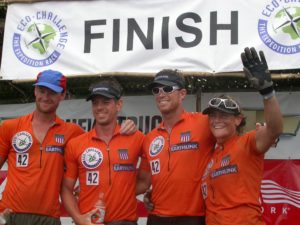
VIEWPOINTS
What made you decide to write your New York Times Bestseller book “How Winning Works”?
As a speaker, it’s important to have something available for people who want to know more or hear more stories because they’re inspired during your keynote presentation. So, I wrote How Winning Works for my new friends in every audience who want to share what they’ve learned and how they feel with their families, kids, and colleagues.
I don’t really expect people to peruse a bookstore to pick up a copy of my book, since I’m not famous or important. It was written for anyone who decides they are my tribe once they know me.
There is a statement you made previously: “Magic that allows ordinary people to accomplish extraordinary things together.” Could you elaborate on this and how it has worked out for you?
Human Synergy, a term I use when describing my adventure racing teams’ success, is that magic which makes us better together than any of us could ever be alone. It says that we are better, stronger, faster, more productive, and more successful BECAUSE of one another, versus DESPITE one another. Having teammates around you is not incidental to your success, it’s instrumental to your success, whether you are striving for a team goal or a personal one.
Perhaps Vince Lombardi (an American football coach that never had a losing season) described Human Synergy best when he said “The secret is to work less as an individual and more as a team. As a coach, I play not my 11 best, but my best 11.” In other words, it’s not the brightest superstars that create the greatest teams; the greatest TEAMMATES create the greatest teams.
Your adventure racing friends called you the ‘Human Cockroach’ because you could make it through anything. In this regard, how can anyone become more resilient in their own lives when it comes to facing physical and mental challenges?
I think that our courage, grit, and resilience come from 3 Bs: we can either be BORN with it, we can BUILD it, or we can BORROW it.
Born
Many people are born with and grow up knowing that they’re just meant to be successful if they work hard, continue to learn, and never give up. They are absolutely right! But sometimes that belief in ourselves runs thin. When this happens, we need to rely on the courage and grit that we’ve built.
Build
You can actually create your courage and grit by deeply challenging yourself and succeeding, time and time again. I’ve always believed since I was a little kid that every time I truly challenge myself, I earn a new “brick” for my confidence wall. And it’s been my mission over my lifetime to build that confidence wall as high as possible, brick by brick.
Because the height of that confidence wall has a direct relationship to the amount of courage and grit you have when faced with a difficult challenge. You have to earn your courage by DOING hard things. Because simply believing in yourself without PROVING it to yourself is only for Disney Princesses.
Borrow
We can also borrow our courage from other people in a couple of ways. First, having a higher sense of purpose, doing something FOR someone else, gives us incredible strength and resilience.
Second, surrounding ourselves with people who truly and deeply believe in us. When we have people around us who know us and are convinced we can succeed, we can borrow that belief in ourselves from them, until we’re able to grow our own.
As you can imagine, there was a lot of courage-building in adventure racing, as well as firefighting. But if I had a guess at it, I’d say that most of my courage was borrowed from my teammates and crew, whom I could never let down, and who always lifted me up!
